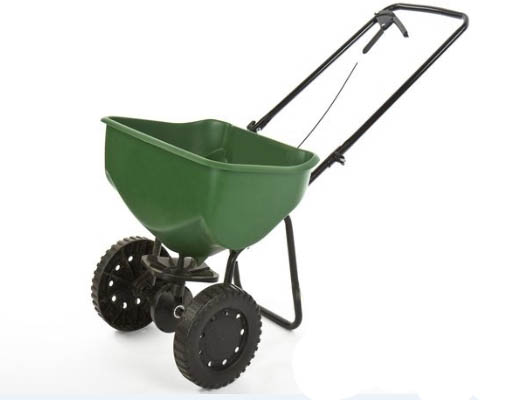How to Calibrate Your Fertiliser Spreader
There are no definitive guidelines for setting the spreader. This is because different seed, moss killers & fertilisers all come in different granular sizes & therefore require different aperture settings.
For this reason we recommend doing the following trial & error test to determine the best settings for your needs.
To calibrate the spreader
1. Mark out a 10m length of lawn
2. Determine how much product would be required to cover that 10m run (See below for recommended application rates for most common fertilisers, moss killers & seed)
3. Fill the spreader with with the recommended amount for that 10m run
4. Set it to the middle setting No.5
5. Start at the beginning & walk to the end of the 10m
6. Keep a close eye on the drop rate and flow rate from the hopper
Determine the results
Examine the amount of product remaining in the spreader
1.If the spreader ran out before the end of the run, reduce the settings accordingly
2.If the spreader ran out right at the end of the run, the setting is fine
3. If the spreader still has some product remaining, increase the size of the aperture accordingly
This is the quickest & most accurate way to determine the settings for you
The result will give you an even & accurate application over your lawn
You can continue to divide your lawn / garden into 1m wide sections
The spread doesn't have to be exact but it is important to apply roughly the same amount over the entire lawn
Recommended application rates for most common fertilisers, moss killers & seed
- Lawn Seed: 35g /m2
- Wild Flower Seeds: 4g /m2
- Garden Lime: Depends on soil acidity. Can apply 500g /m2
- General Lawn Feed: 35g /m2
- Lawn Weed Feed & Moss Killer: 30g /m2
- Ammonium Sulphate: Depends on use. 35g /m2 as a fertiliser. 70g /m2 as a pH reducer
- Potassium Sulphate: 30g /m2
- Super Phosphate: 100g /m2
- Fish Blood & Bone: 70g /m2
- Sulphate of Iron: 35 to 70g /m2





